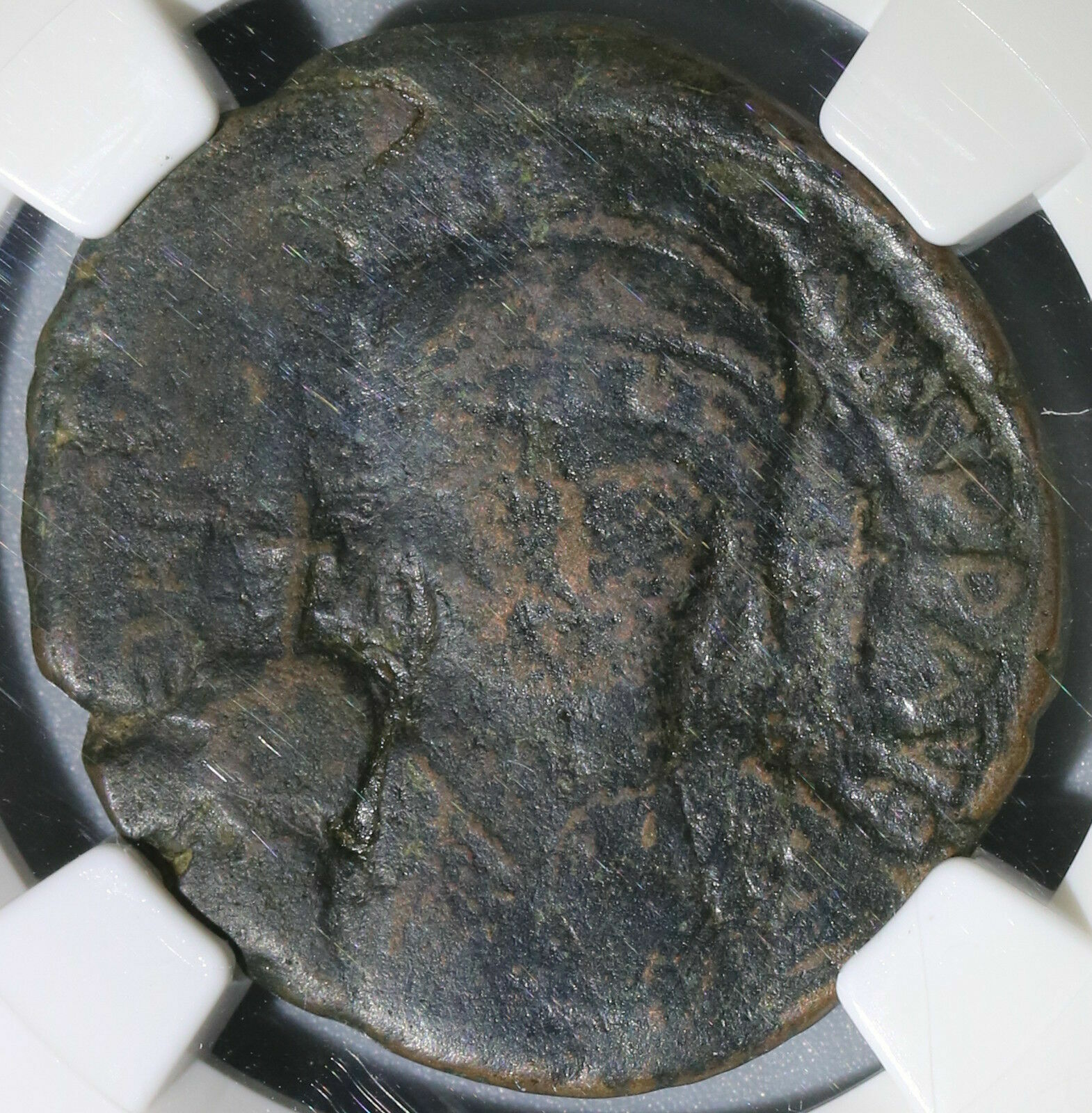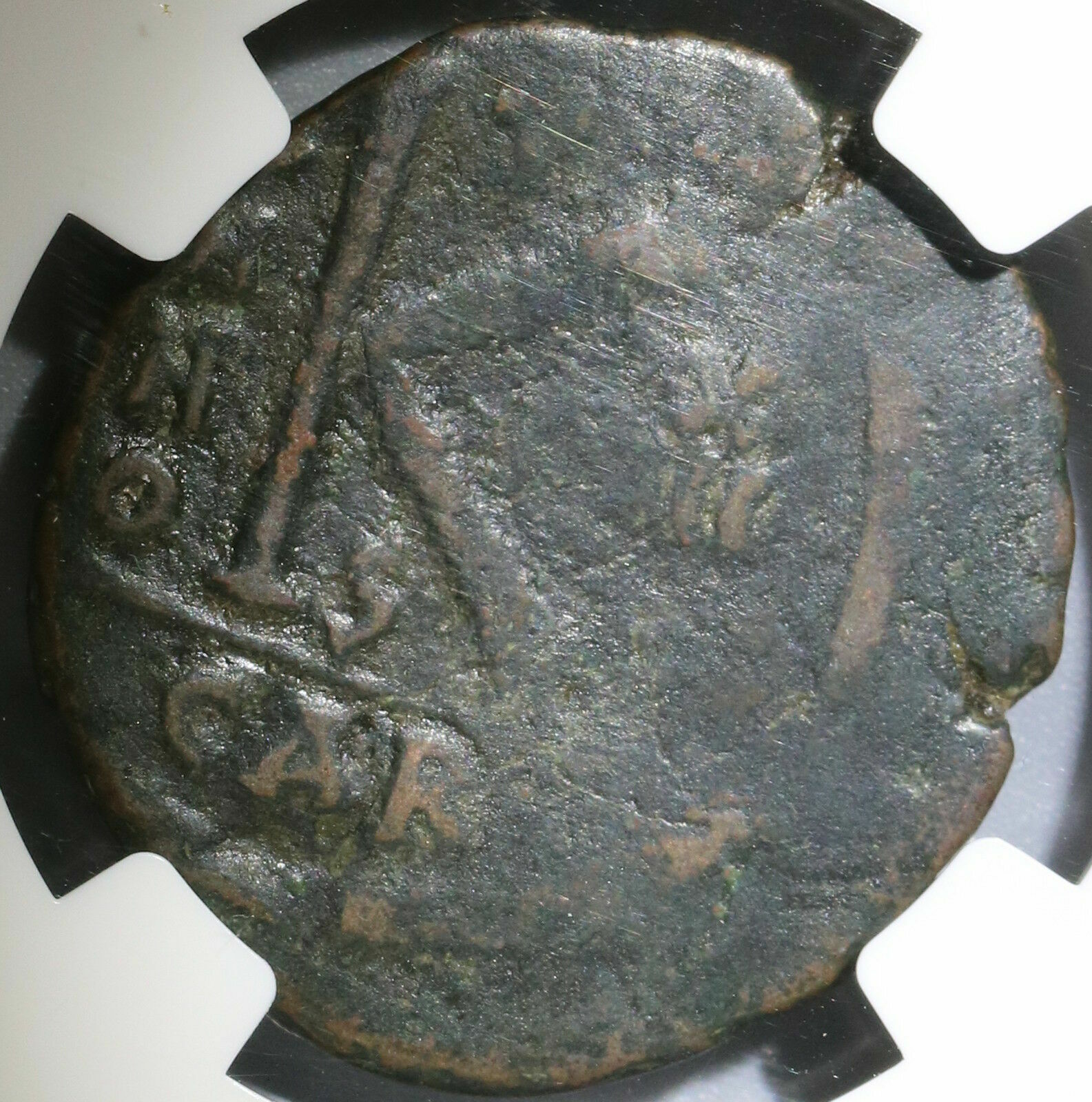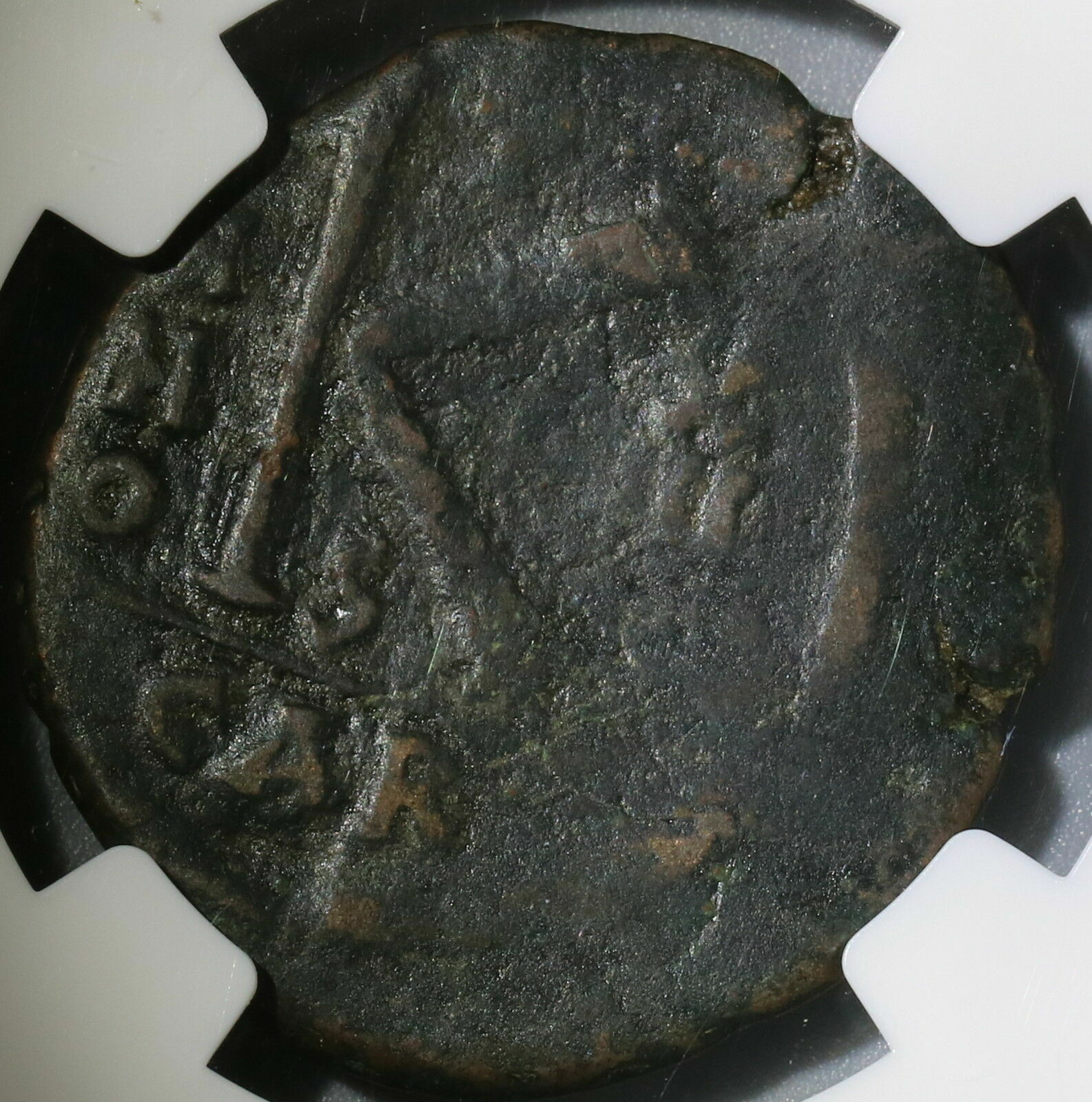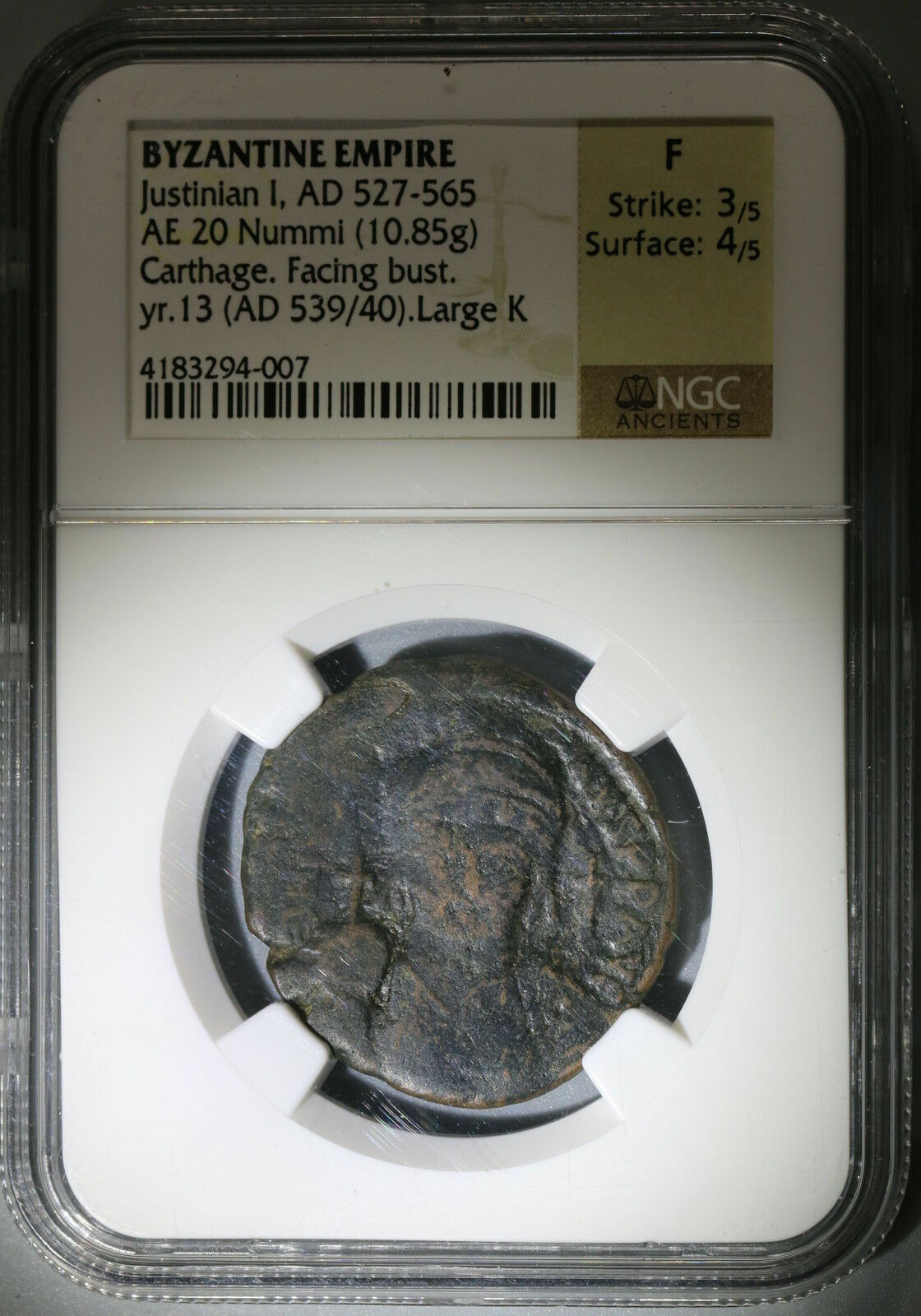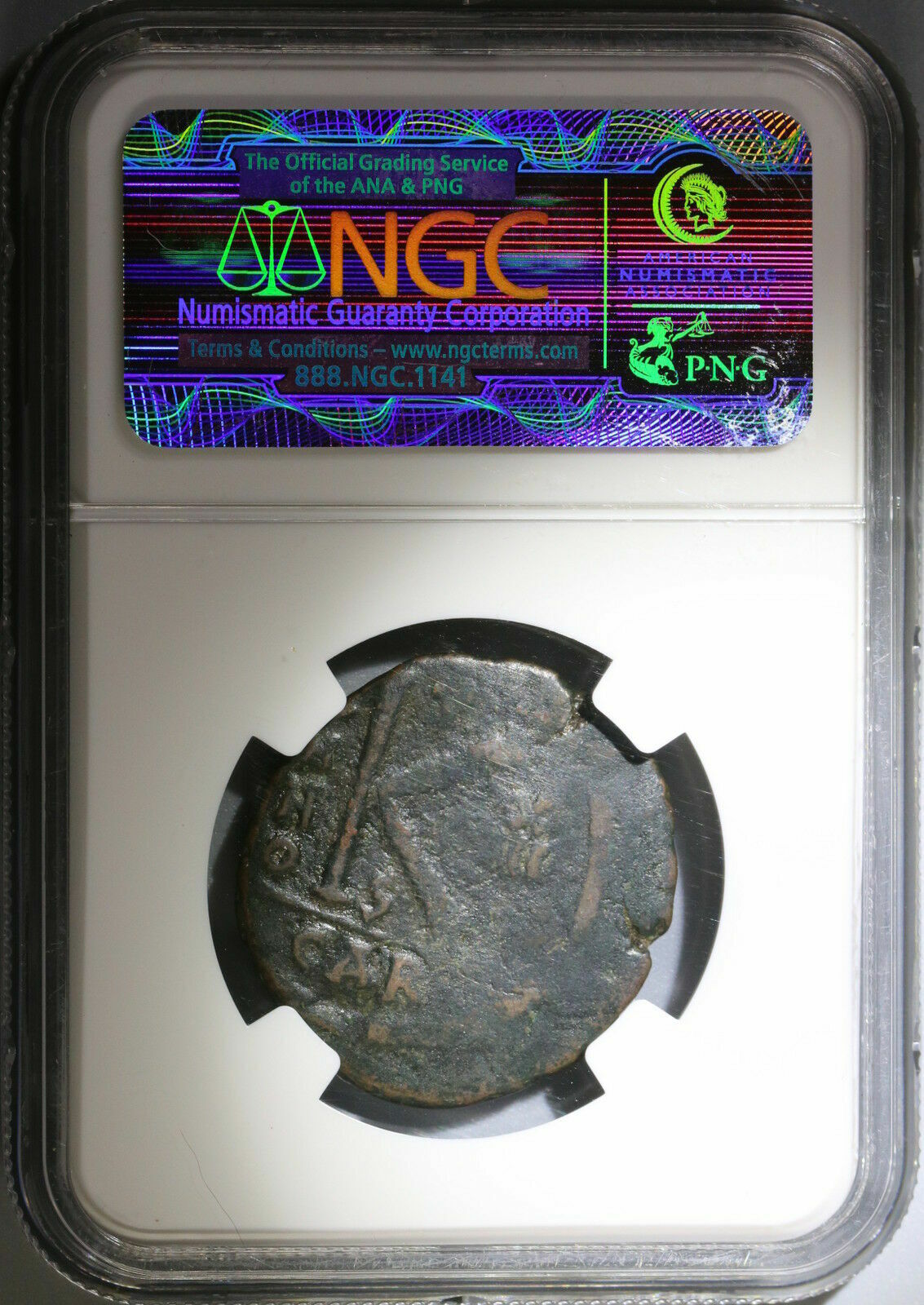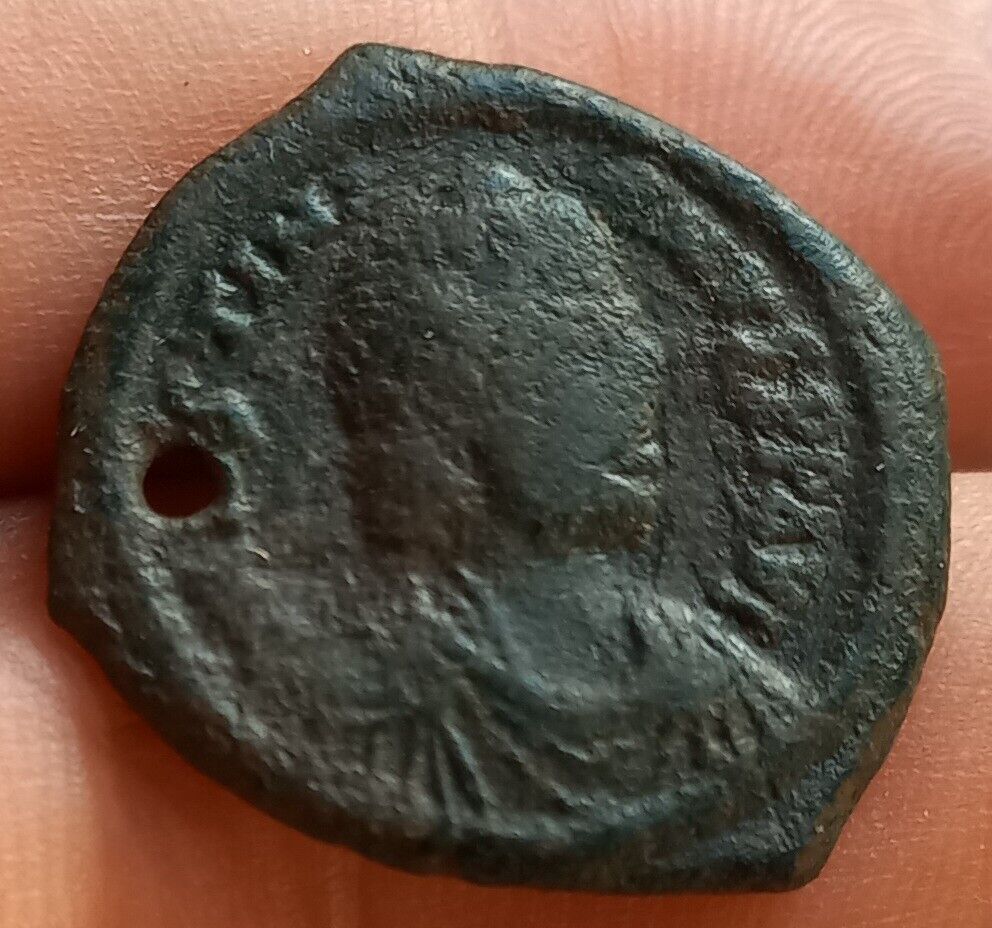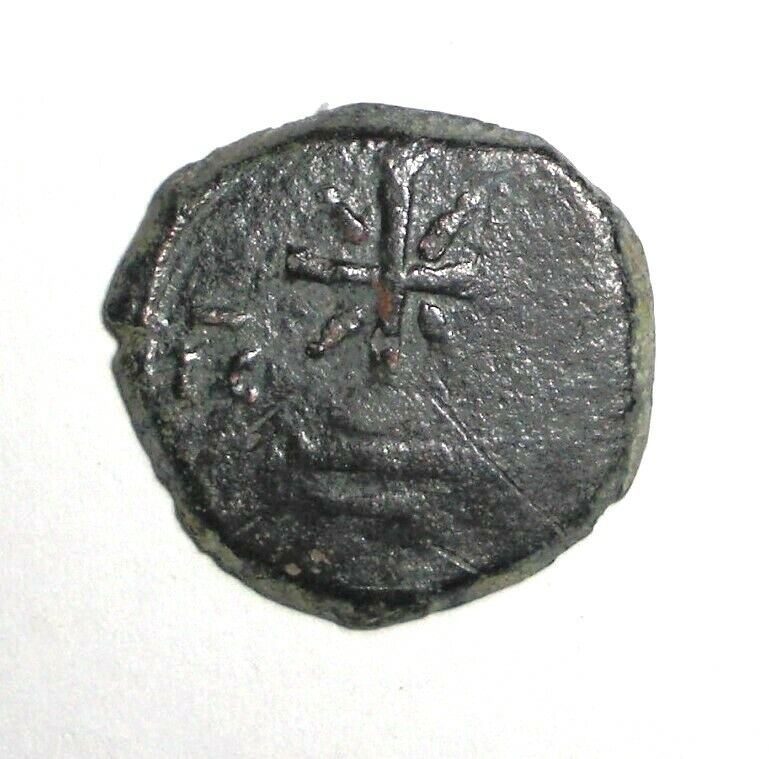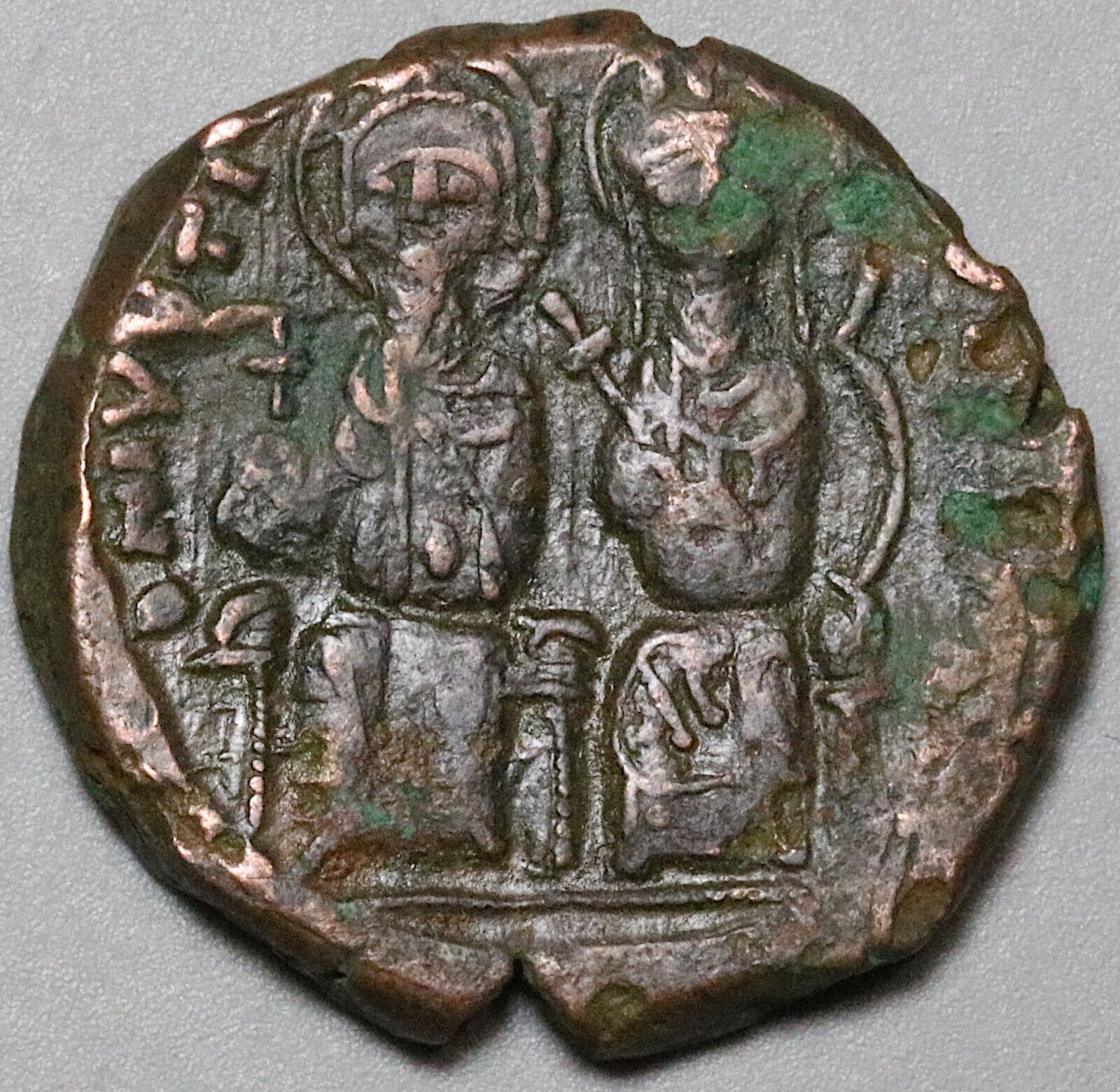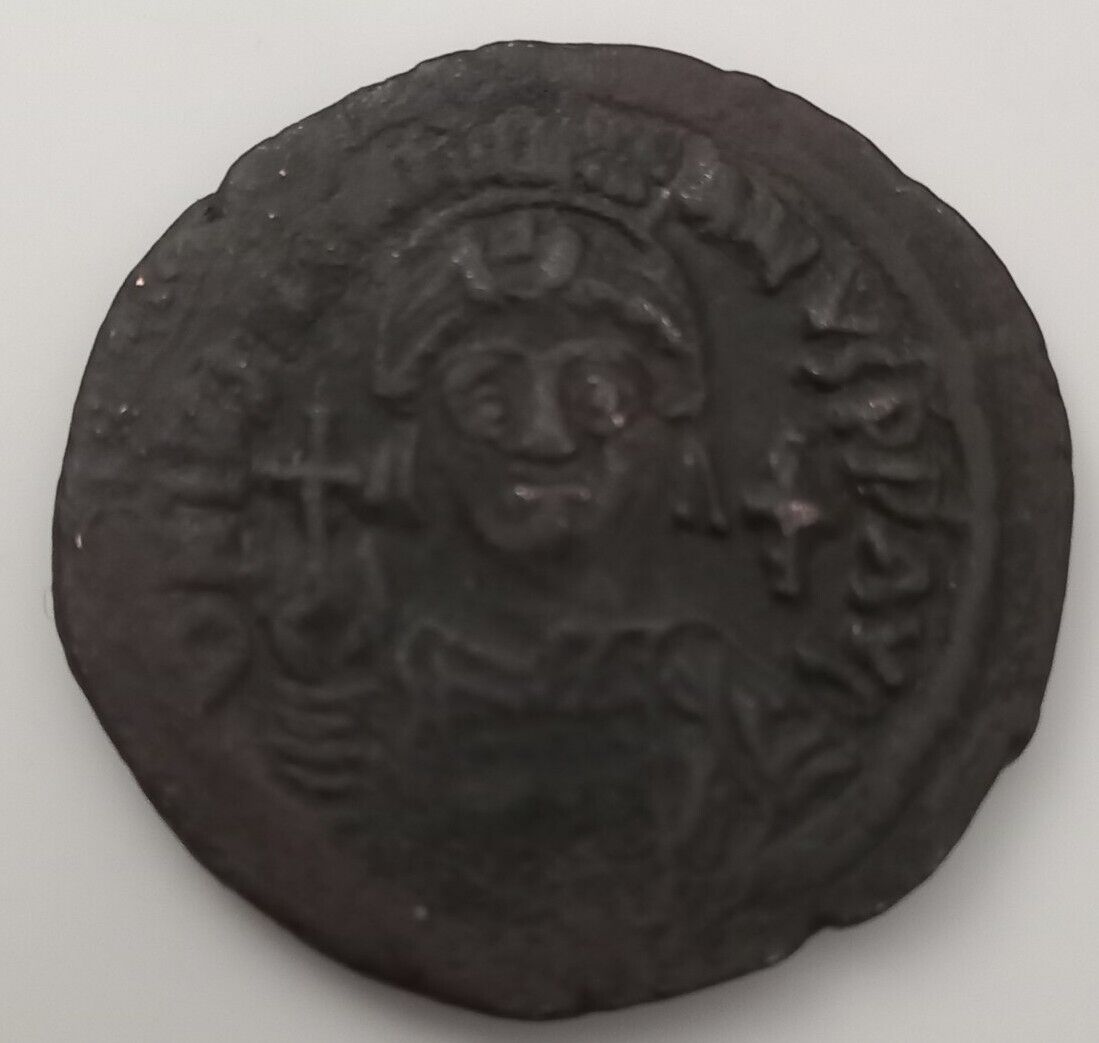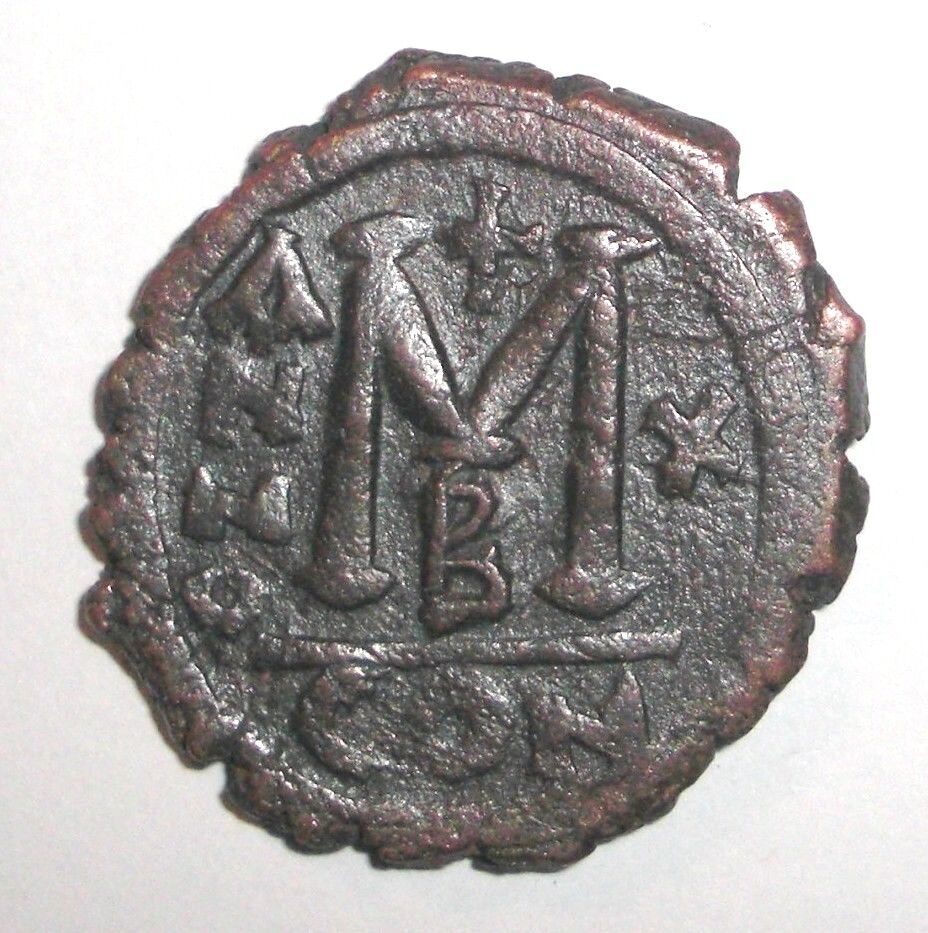-40%
539 NGC Fine Justinian I Byzantine Empire 20 Nummi 1/2 Follis Carthage 21092301C
$ 87.11
- Description
- Size Guide
Description
Fine datedByzantine Empire
Emperor Justinian I copper
20 nummi = 1/2 follis coin.
Rare type struck for Justinian at the Carthage Mint (mint mark CAR) during his 13th regnal year =
539/540 CE
.
Sear 266,
copper, 29mm, 10.85g.
Obverse: D N IVSTINI-ANVS P P AVG, helmeted, cuirassed bust of Justinian I facing, globus cruciger in right hand, shield in left.
Reverse: Large K (value), A/N/N/O to left, cross above, X/III (date) to right, S below, CAR in exergue.
Denomination K = 20 nummi = 1/2 follis, Carthage mint (CAR ), sixth officinia S
, reign year ANNO XIII (13) = 539/540 CE.
Certified by NGC to F, Strike 3/5, Surface 4/5.
Justinian the Great was the Eastern Roman emperor from 527 to 565. During his reign, Justinian sought to revive the empire's greatness and reconquer the lost western half of the historical Roman Empire. Justinian's rule constitutes a distinct epoch in the history of the Later Roman empire, and his reign is marked by the ambitious but only partly realized renovatio imperii, or "restoration of the Empire".
Because of his restoration activities, Justinian has sometimes been known as the "last Roman" in modern historiography. This ambition was expressed by the partial recovery of the territories of the defunct Western Roman Empire. His general, Belisarius, swiftly conquered the Vandal Kingdom in North Africa. Subsequently, Belisarius, Narses, and other generals conquered the Ostrogothic kingdom, restoring Dalmatia, Sicily, Italy, and Rome to the empire after more than half a century of rule by the Ostrogoths. The prefect Liberius reclaimed the south of the Iberian peninsula, establishing the province of Spania. These campaigns re-established Roman control over the western Mediterranean, increasing the Empire's annual revenue by over a million solidi.
A still more resonant aspect of his legacy was the uniform rewriting of Roman law, the Corpus Juris Civilis, which is still the basis of civil law in many modern states.
His reign also marked a blossoming of Byzantine culture, and his building program yielded such masterpieces as the church of Hagia Sophia.
A devastating outbreak of bubonic plague in the early 540s marked the end of an age of splendour.
